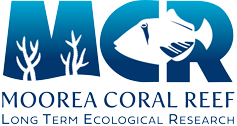Year:
2022
Authors:
Source:
Ph.D. Dissertation
Abstract:
Tropical coral reefs have been declining globally due to global and local anthropogenic stressors (Pandolfi et al., 2003). Further coral reef decline in the future is expected (Hoegh-Guldberg, 1999; Hughes et al., 2003) unless efforts to reduce these stressors are implemented (Gattuso et al., 2015)or unless corals can adapt to such changing environmental conditions. Whether corals have such an adaptive capacity is not well known (Hoegh-Guldberg et al., 2018), but studies have shown that spatio-temporal variations in corals’ environmental conditions could be key for corals’ survival in the future, as the corals with historically high variability have been found to be less susceptible to changes in chemical conditions (Kapsenberg and Cyronak, 2019). Despite their importance, the spatio-temporal variations in carbonate chemistry over reef structures are poorly quantified. Our knowledge is, in no small part, limited by the scarcity and sparsity of the observations. The complex interaction between the physical, chemical and biological processes in coral reefs drive high variations in the seawater chemistry within reef system (Bates, 2002; Bates et al., 2010; Kleypas et al., 2015; Chan and Eggins, 2017;Waldbusser and Salisbury, 2014; Bates et al., 2001; Comeau et al., 2014c; Cyronak et al., 2020; Gruber et al., 2017; Kayanne et al., 1995; Silverman et al., 2012). The imprints of the corals on the seawater are driven by the balance of photosynthesis, respiration, and calcification (Cyronak et al., 2018; Takeshita et al., 2018), and the transport of these imprints with circulation and mixing create unique spatial and temporal variations (Lowe and Falter, 2015). In return, physical and chemical conditions that the corals are exposed to alter their metabolic processes (e.g. McCulloch et al., 2012; Venn et al., 2013; McCulloch et al., 2017; Ross et al., 2017; Comeau et al., 2019). An efficient way to analyse the spatio-temporal variability emerging in coral reefs from these complex interactions is to use numerical models. In this thesis, I developed a fully coupled numerical model for the reef system on the north shore of Moorea Island on the basis of a three existing models, i.e., the hydrodynamic model Coupled Ocean Atmosphere Wave and Sediment Transport (COAWST) Model (Warner et al., 2010), the Biogeochemical Elemental Cycling model (BEC) (Moore et al., 2004), and the coral polyp physiology model of Nakamura et al. (2013). The coupled model incorporates the waves, currents, seawater carbonate chemistry, air-sea gas exchange, and coral metabolism (photosynthesis, respiration, and calcification) in interaction with each other. I employed the model on the north shore of Moorea for three main wave modes, which account for 93% of the wave conditions throughout the year. With this set-up, I investigated the spatio-temporal variability in seawater carbonate chemistry stemming from the interaction between hydrodynamics and coral metabolism, as well as the spatio-temporal variations in coral metabolism emerging from the interaction between seawater chemistry and hydrodynamics. The coupled model simulates the general circulation dynamics across the reef system in good agreement with observations by earlier studies from the north shore of Moorea (Hench et al., 2008; Herdman et al., 2017, 2015; Leichter et al., 2013, e.g.). In general, the model captures the unidirectional flow across the reef induced by the offshore waves, and the outflow of these reef waters back to the open ocean through the narrow channels between the reef fragments. The model also suggests that while the majority of these outflowing waters leave the reef system with an offshore anticlockwise flow, some recirculate over the reefs and get enriched with the metabolic imprints of the corals. The modelled flow fields also match well with the data from The Moorea Coral Reef Long Term Ecological Research (MCR LTER) project. The model results suggest that the circulation is the main driver of the spatial patterns in the seawater chemistry. The metabolic imprint of the corals on the overlying seawater accumulates along the unidirectional flow across the reef, leading to large chemical gradients from the open ocean towards the land. Seawater alkalinity, dissolved inorganic carbon (DIC) and the partial pressure of CO2, i.e., pCO2, vary between 1850-2400 μmol kg−1, 1650-2000 μmol kg−1, and 380-1800 μatm, respectively. Regulating the flow fields, and thus the duration of the contact time of the seawater with the corals underneath, the offshore waves heights control the strength of the chemical gradients. The direction of the waves also affect the spatial patterns in seawater chemistry, through modulating the length and the pathway of the flow trajectories. Furthermore, Lagrangian analysis conducted within the scope of thesis demonstrate that a typical water parcel traverses the reef 2-3 times on average before it exists the nearshore environment, enhancing the chemical gradients across the reef with this recirculation. The diel variations in the balance between coral net community production (coral photosynthesis minus coral respiration) and calcification strongly control the chemical state of the reef waters. During the day, DIC consumption by positive net community production (photosynthesis > respiration) and calcification drives strong DIC and total alkalinity (TA) reductions (∼100 μmol kg−1), but relatively modest variations in pH (∼0.02 increase), pCO2 (<50 μatm decrease)and aragonite saturation state, Ωa (∼0.5 increase). In contrast, at night, negative net community production and calcification create strong reductions in TA (>100μmol kg−1) and smaller increases in DIC (∼50 μmol kg−1), resulting in high variations in pH (as much as a 2 unit decrease), pCO2 (>1000 μatm increase) and Ωa (>2 unit decrease). The diel variability increases strongly from the fore reef to the back reefs, with the landward reef sections demonstrating the highest diel variability in seawater chemistry. Under low wave conditions, the diel variability amplifies for all regions, but most strongly in the landward reef sections, as a result of a higher accumulation of the imprint of the upstream corals. The model results also demonstrate that the balance of the metabolic rates vary depending on the scale of analysis, leading to strong differences in the relative changes in seawater TA and DIC. Locally and over the course of the diel cycle, the metabolic balance is dominated by net community production, resulting in a TA to DIC slope of about 0.2. This slope has been used as an important metric to assess the metabolic state of coral reefs (Cyronak et al., 2018). When analyzed by taking transects across the reef, the slope for the daily mean reaches 1.7. This steep slope is a consequence of net community production reaching zero over the course of the day, permitting calcification to dominate this relationship. Despite ocean circulation tending to homogenize the conditions over the reef, corals living in particular reef sections are exposed to distinctly different chemical conditions, such as a substantial lower pH with respect to open ocean conditions, for all wave conditions. Emergence of such distinct regions within the reef (i.e., biogeochemical niches) is important, as it might translate into variable vulnerabilities of corals to ocean acidification. The hydrodynamics of the coral reef not only regulates the spatial patterns in seawater carbonate chemistry, but also impacts the spatial patterns inside the corals. Controlling the diffusive mass transfer rate through regulating bottom stress, and structuring the chemical distribution in the seawater, the hydrodynamics of the coral reef has a critical role on the chemical states inside the corals. According to the model results, the light-driven diel cycles of photosynthesis are spatially very similar. However, the diel cycles in corals’ calcifying fluid, and thus coral calcification, show high variability across space (reaching up to 230% under low wave conditions), owing to differences in the magnitude of the diffusive fluxes between the corals and the seawater. In fact, waves, both determining the chemical state of the overlying seawater and regulating diffusive exchange velocity between the seawater and the corals, promote spatial variations in the corals’ physiological diel cycles. The hydrodynamical/biogeochemical/physiological model developed in this study for the north shore of Moorea is the first 3-D model that reveals the spatio-temporal variations in coral reef’s carbonate chemistry and in coral physiology in time and space. It permits us to examine the mechanisms behind highly variable chemical and physiological conditions over the reefs. Resolving this mechanism is crucial, as it demonstrates that while the spatio-temporal variations are substantial, they are also structured. Understanding the structure of the variability in coral reefs helps us to assess their state in the future and to take the required management strategies in advance. The development of such a comprehensive model requires various methodological simplifications, which turn into caveats. Although the simplification made in this study might lead to under- or overestimation of the magnitude of the chemical or physiological spatio-temporal variations in seawater chemistry and coral metabolism, they are not expected to affect the findings of this study that regard the mechanism behind these spatio-temporal variations. The findings of this thesis provide important implications about the present and the future of the coral reef systems. For the present of the coral reef studies, the model results point out the deficiencies of the current sampling practices in terms of determining the sample locations, and put forward alternative choices based on the simulated spatio-temporal variability in the reef system. Regarding the future of the coral reefs, the primary implication of the model results is that corals of persistently high chemical heterogeneity (i.e. fringing reef corals) might better cope with the changes in the seawater chemistry in the future. Finally, this thesis provides appealing future directions of research. These directions involve the spatio-temporal variations in corals’ metabolic responses to future’s warmer, acidified and deoxygenated oceans. Besides, the changes in the reef’s chemical and biological dynamics under a dynamic relationship between corals and their endo-symbionts and/or under the competition between corals and the macroalgae are the other main potential future research directions. The initial results of the model in these future directions are promising and open exciting doors to explore further.
Publication Type:
Thesis or Dissertation
Publisher:
ETH Zurich



